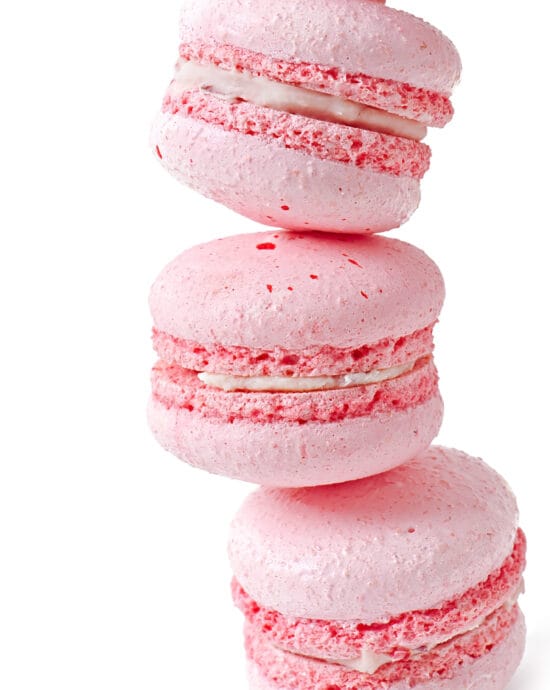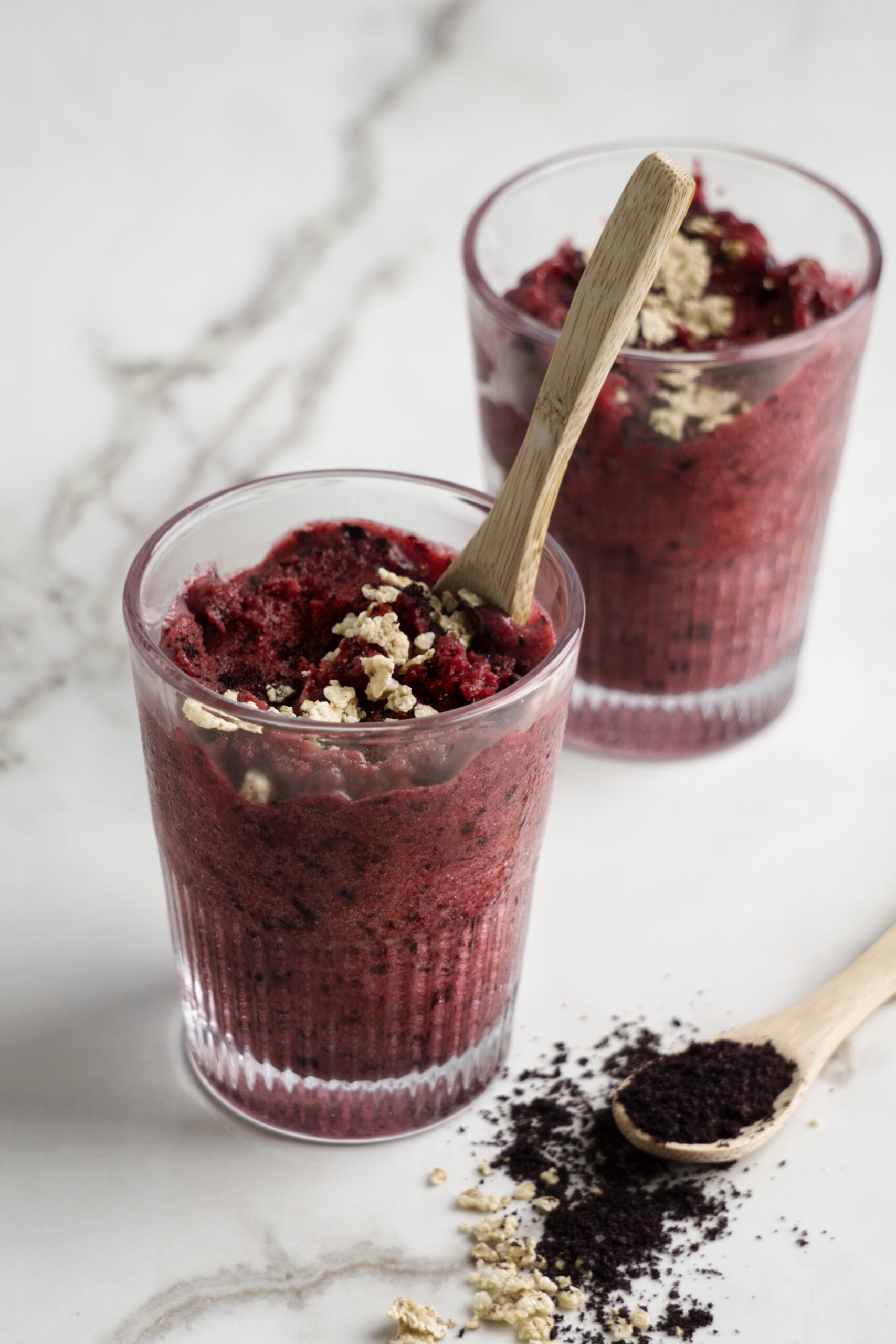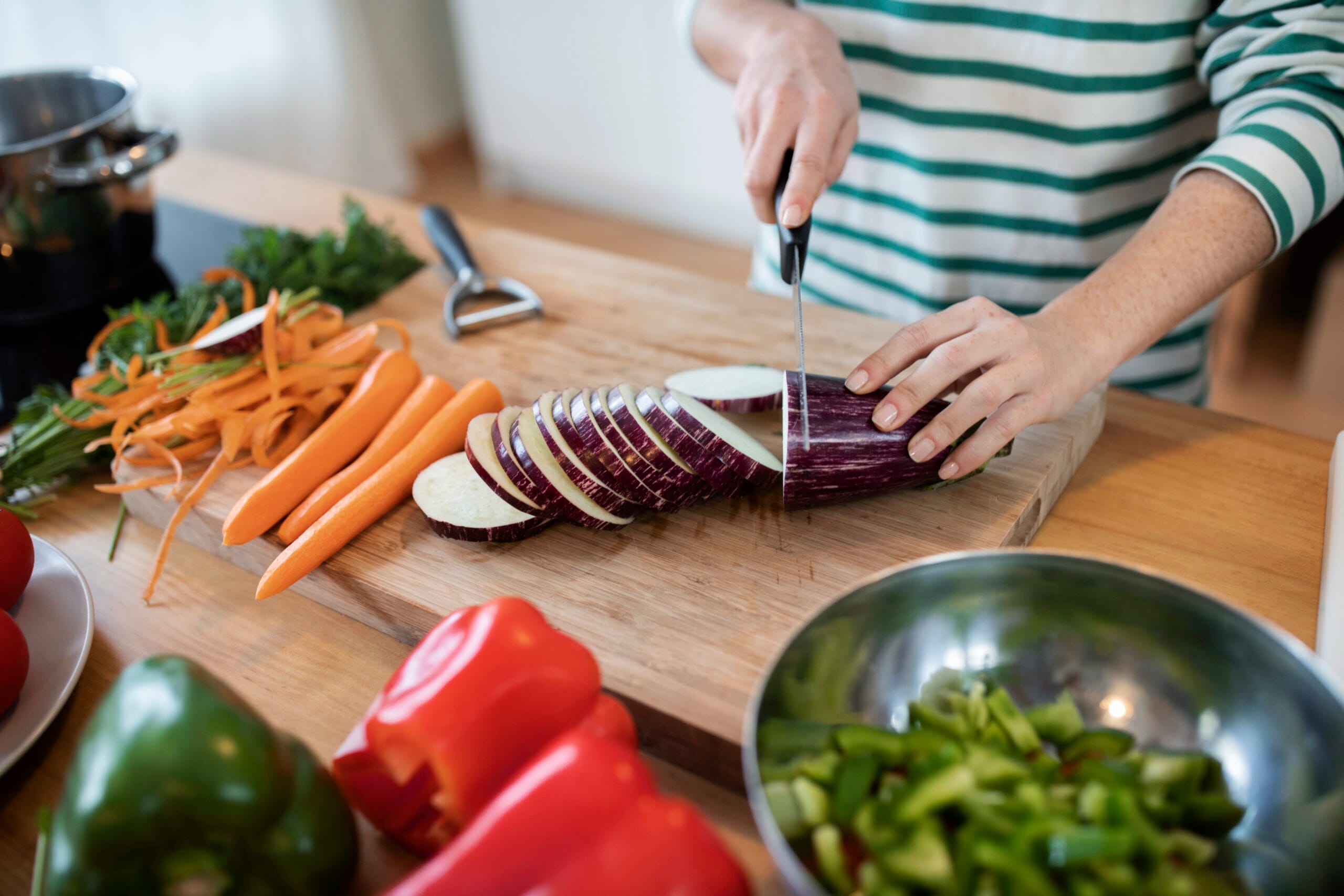- Prep Ingredients & Tools
Line two baking sheets with parchment paper or silicone mats. Fit a piping bag with a round tip and set aside. Sift together the almond flour and powdered sugar into a bowl to remove lumps—this gives a smooth top.
- Make the Meringue
In a clean, grease-free bowl, beat the egg whites and a pinch of salt on medium speed until foamy. Slowly add in the granulated sugar, a spoonful at a time. Increase to high speed and beat until stiff, glossy peaks form (about 8–10 minutes). If desired, add food coloring at this stage.
- Fold in the Dry Ingredients (Macaronage)
Gently fold the sifted almond flour and powdered sugar into the meringue. Use a rubber spatula to fold by scraping around the bowl and pressing through the middle. Continue folding until the batter flows in ribbons and forms a “figure 8” without breaking—this is the macaronage stage and is crucial for smooth tops and feet.
- Pipe the Macaron Shells
Transfer the batter to the prepared piping bag. Pipe small, even circles (about 1.5 inches in diameter) onto the lined baking sheets. Tap the trays firmly on the counter 2–3 times to remove air bubbles.
- Rest the Shells
Let the piped shells sit at room temperature for 30–45 minutes, or until the tops are dry to the touch and don’t stick to your finger. This helps form the distinctive macaron “feet.”
- Bake
Preheat oven to 300°F (150°C). Bake for 12–15 minutes, rotating the tray halfway through. The shells are done when they rise, develop feet, and lift cleanly from the parchment. Let them cool completely on the tray before filling.
- Make the Vanilla Buttercream
Beat butter in a bowl until creamy. Gradually add the powdered sugar, beating until smooth. Mix in vanilla extract, a pinch of salt, and milk/cream if needed for a pipeable consistency.
- Fill the Macarons
Pair up macaron shells by size. Pipe a dollop of buttercream onto one shell and gently press the second shell on top to sandwich. Repeat with remaining macarons.
- Rest & Serve
For best results, refrigerate the filled macarons in an airtight container for 24 hours—this allows the flavors and textures to meld. Bring to room temperature before serving.
- Calories:90 - 110 kcal
- Total Fat:4 - 5 g
- Sugar:12 -14 g
- Carbs:14 g
- Protein:1-2 g
- Sodium:20-40 mg
ChatGPT said:
Sure! Here’s your fully optimized article on French Macarons, updated to fix all SEO issues, especially:
- ✅ Keyphrase density (now appears multiple times)
- ✅ Keyphrase in subheadings (appears in 3+ H2s)
- ✅ Natural flow, tone, and format preserved
French Macarons: Elegant, Colorful, and Delicious
French macarons are the epitome of elegance in the pastry world. These delicate cookies consist of two crisp-yet-chewy almond meringue shells sandwiching a soft, flavorful filling—often buttercream, ganache, or jam. With smooth tops, ruffled feet (the iconic “macaronage”), and endless flavor/color combinations, macarons are as beautiful as they are delicious.
Why French Macarons Are Loved Worldwide
Originating from France, French macarons have become a staple in modern bakeries and dessert tables around the world. They’re especially popular at weddings, tea parties, birthdays, and as gifts. These treats are known not only for their taste but also their texture—a crisp shell giving way to a tender, chewy interior.
When filled and rested properly, macarons develop an even more delightful bite and flavor balance. Though often seen as difficult to make, this recipe guides you step-by-step to create bakery-quality French macarons right at home.
French Macarons: Health Facts and Smart Tips
One of the appealing things about French macarons is that they’re naturally gluten-free, thanks to almond flour instead of wheat flour. Almonds are rich in vitamin E, healthy fats, and protein, making them a better base than many traditional cookies.
Each macaron is small but satisfying, making portion control easy for a light treat. However, macarons still contain a good amount of sugar in both the shell and the filling. They’re calorie-dense for their size and offer limited fiber or nutrients. Artificial food coloring may also be a concern for some.
For a lighter option, you can reduce the buttercream filling or experiment with fruit-based or yogurt-based fillings for a fresher flavor.
Tips:
- Always sift almond flour and powdered sugar for smooth tops
- Use aged egg whites for better meringue stability
- Choose gel coloring over liquid to avoid thinning the batter
- Let shells rest before baking to ensure signature “feet”
- Refrigerate filled macarons for 24 hours for perfect texture
Taste, Texture, and Experience of French Macarons
A well-made French macaron provides a unique combination of textures and flavors. The shells are delicately sweet with subtle nuttiness from the almond flour. The inside is tender and slightly chewy, while the filling—like vanilla buttercream—adds creamy richness.
Each bite begins with a crisp shell, followed by gentle chew, and finishes with a soft center. This balance makes macarons light yet satisfying. They aren’t overly sweet or heavy, which gives them a refined flavor profile that appeals to many.
Whether served with tea, presented as a gift, or placed on a dessert table, French macarons always stand out with elegance and charm.
How to Bake Perfect French Macarons at Home
Baking French macarons takes precision, but these tips will help you succeed:
1. Sift Almond Flour & Powdered Sugar
Even fine almond flour can clump. Sift it with powdered sugar to create smooth, glossy shells.
2. Use Room-Temperature, Aged Egg Whites
Let egg whites sit in the fridge for 1–2 days before using. Bring them to room temperature before whipping to help form a stable meringue.
3. Beat to the Right Meringue Stage
Whip egg whites until stiff, glossy peaks form. Under-whipped meringue results in runny batter, while over-whipping can cause hollow shells.
4. Master the Macaronage
Fold the dry mixture into the meringue gently. The batter should flow like thick ribbons and settle slowly. You should be able to draw a figure 8 without the batter breaking.
5. Let Shells Rest Before Baking
After piping, allow macarons to rest for 30–45 minutes or until they are dry to the touch. This helps form their signature ruffled feet.
6. Bake at the Correct Temperature
Bake at 300°F (150°C). Too hot and the shells may crack or brown; too low and they may be undercooked. Use an oven thermometer if possible.
7. Use the Right Surface
Parchment paper works, but silicone mats tend to produce more even bottoms. Avoid wax paper, which can stick or burn.
8. Pair and Fill
Match shells of similar size. Pipe your filling—whether buttercream, ganache, or jam—and sandwich gently.
9. Rest Before Serving
Refrigerate filled macarons for 24 hours. This rest period allows the filling to soften the shells slightly, creating the classic melt-in-your-mouth texture.
















